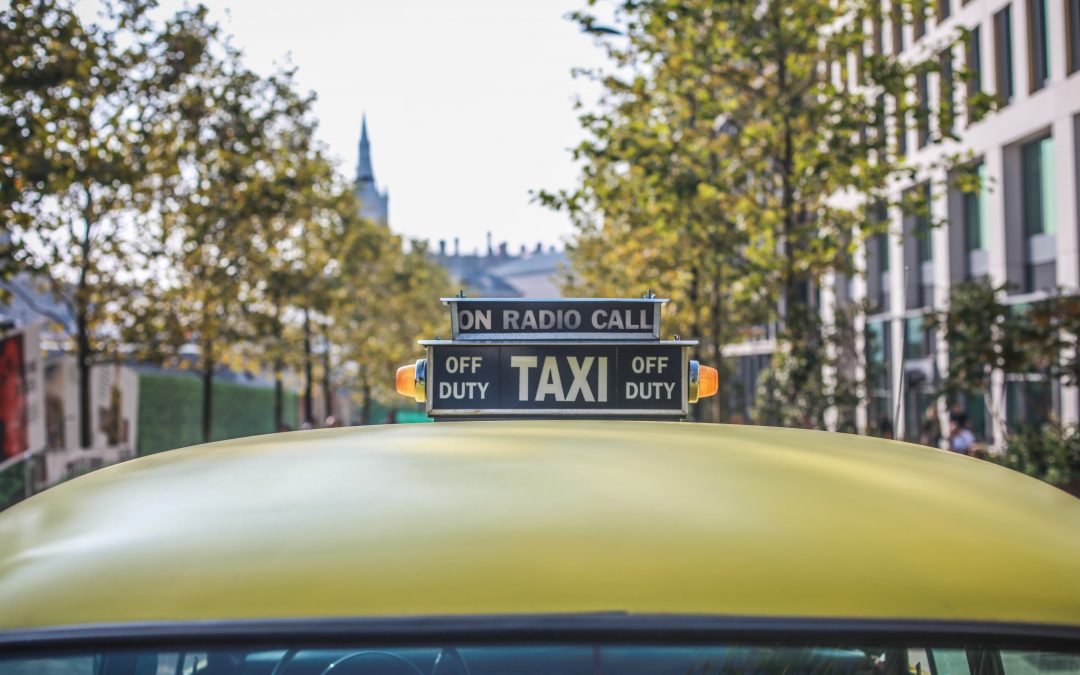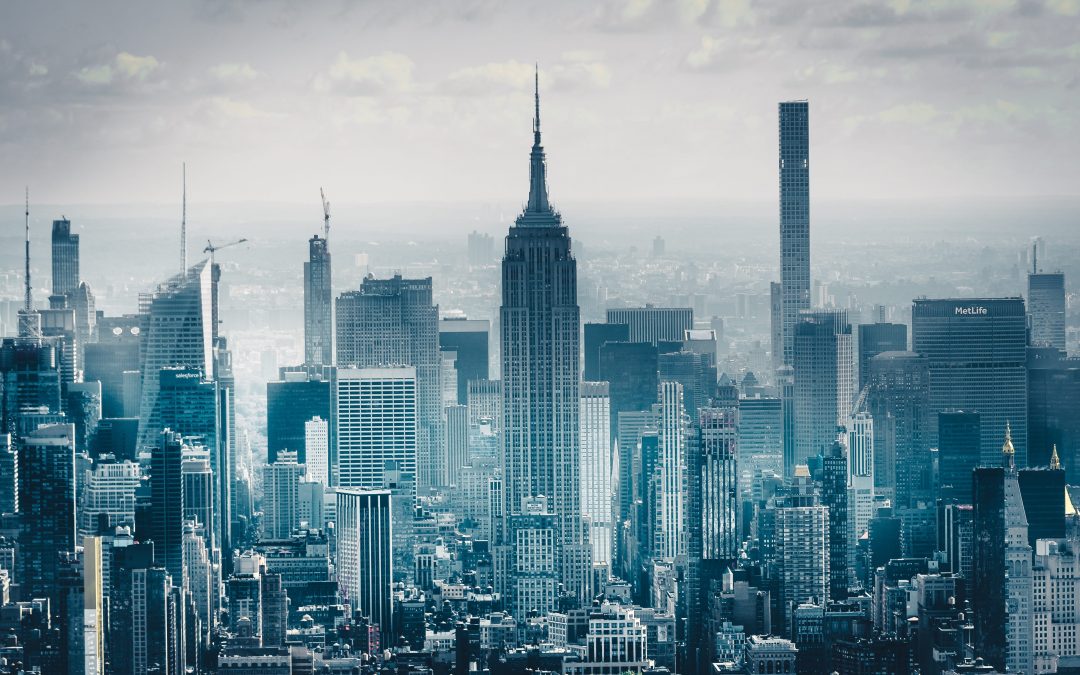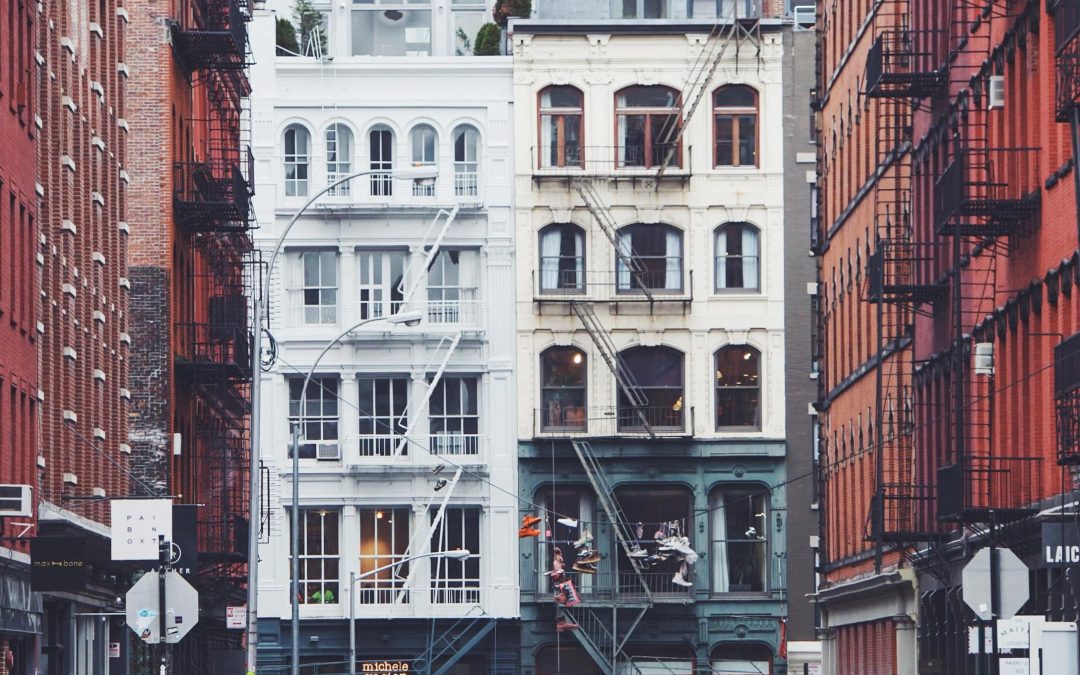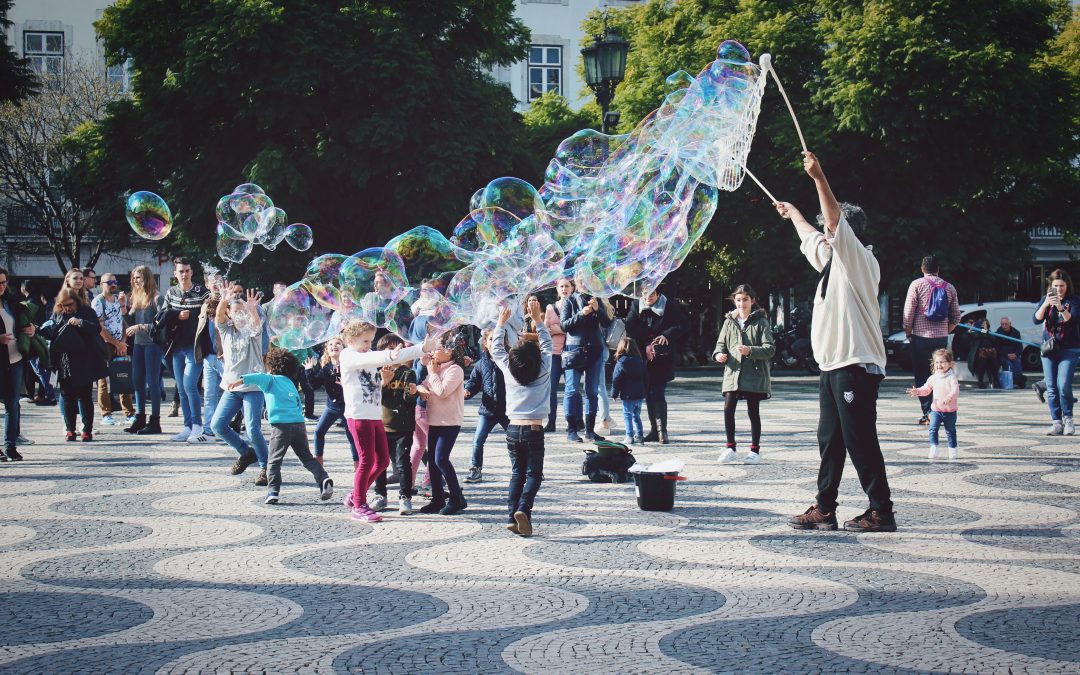
by BCB Property Management | Feb 27, 2017 | Brooklyn, History, Neighborhoods, New York City
The concept of ride-sharing, exemplified by popular services Uber, Lyft and their corresponding apps, is still a fairly fresh transportation trend. Unlike regular planes, trains, and automobiles, ride-sharing apps constitute startup business models that have the potential to disrupt entire transport ecosystems—especially in regards to the already robust taxi fleets in major cities like New York.
Will taxi fleets be a thing of the past, lost by the wayside like horse-drawn carriages? New research out of the Massachusetts Institute of Technology suggests that, if passengers get on board with the car-pooling elements of ride-sharing services, New York City’s transportation network could be supported with just a quarter of its current 14,000 yellow cabs. As few as 3,000 vehicles, researchers say, could service the entire metropolis.
Because the remaining vehicles could be Ubers, Lyfts, Junos, Vias, Getts, or other black car with an app attached, New York City could in theory pull a whopping 85% of its yellow cabs and still service 98% of commuter demand. This would come with huge consequences, both good and bad. As an obvious negative, thousands upon thousands of drivers would lose their jobs. As a positive, congestion could clear up significantly along with pollution.
Of course, these predictions are still largely speculative. They operate on the assumption, first of all, that commuters would be willing to use ride-sharing apps and, importantly, share their cars with other people. Since many people choose cabs to avoid sharing space with strangers, this assumption may be a stretch.
Researchers also factored the rise of autonomous vehicles into the equation. Their algorithms suit autonomous vehicles best, as this technology would in practice plan routes most efficiently. The whole point is that less traffic, smarter vehicles, and ride-sharing would make cab-hailing (and even driving) unnecessary. Without autonomous vehicles, you still get traffic and accidents, meaning more drag-time on the road.
It’s true nonetheless that autonomous technology is progressing rapidly, with investments in the field growing too. But the fact remains that most Americans are simply not interested in autonomous vehicles, and cite a lack of trust as a big reason.
But assume that autonomous cars do catch on in a big way. PBS speculates that this would simply lead to more congestion and emissions, as people would choose go about their professional or personal activities enroute. If people are willing to work, eat, and sleep on the road, this is certainly a possibility. So the question becomes, are New Yorkers more likely to get comfortable in a driverless car for a grueling but hands-free commute, or rub up against strangers for a fast one?
Whatever the case, New York City’s taxi drivers appear to be bracing themselves for change, whatever magnitude it may be and however soon. Though researchers claim that limiting fleet number would be an improvement—the same amount of money for shorter shifts—not everyone is convinced.
The shift is well underway, and taxi drivers are feeling it. According to the New York Times, taxi medallions are going for half of the $1.3 million recorded just three years ago, and the average number of daily taxi trips has been reduced by 100,000 in comparison to six years ago. As more people grow comfortable using apps to catch rides, the decline of yellow cabs isn’t just inevitable. It’s already happening.
In a way, the vanishing of taxis, if and when the time comes, will be the end of an era. Yellow cabs have become synonymous with New York life: a quintessential flash of color in a sometimes gloomy cityscape. It’s hard to imagine the city without them. But nostalgia can’t erase the fact that ride-sharing is cheaper, easier, and more efficient than sticking your hand into the street and hoping to catch a car at random.
If taxis become obsolete, is transport system run by ride-sharing startups ideal? Judging by the recent backlash against the Uber, perhaps not. Ride-sharing companies, still only about decade old, have a lot of kinks to work out in order to prove that they are in the drivers’, employees’ and customers’ best interest. Given the fierce competition, we’ll likely see adjustments in the market to meet the demands and preferences of the public. If the result is black instead of yellow, so be it.

by BCB Property Management | Feb 20, 2017 | Brooklyn, Neighborhoods, New York City, Real Estate
As reported by Bloomberg, what began as a softening of the luxury real estate market in New York has expanded to lower-tier properties. The top 20 percent of apartments are now experiencing price cuts.
Changes in real estate values tend to make investors and homeowners break out in a cold sweat, much like swings in the stock market. But, the current trend in New York isn’t anything to panic about. 2016 wasn’t anything like the crash of 2007-2008.
According to Bloomberg, the luxury market and the tier just under that market (again, the top 20 percent of properties) saw price drops in the 5 to ten percent range.
The definition of a stock market correction is a ten percent drop. The drop, unlike real estate, is often hard to predict, but it’s still considered business-as-usual and not a crash.
In order to keep perspective, it’s important to understand why the real estate market is softening. What’s causing the current dip in New York property prices?
First, 2015 was a “record year for residential building permits in New York City”, according to Slate.
In December 2016, the magazine ran an article that stated, “With developers pressed by expiring loopholes, the city authorized nearly 35,000 new units in the second quarter and nearly 10,000 more in the fourth. Total permits topped 50,000—more than any year since the early 1960s. And many of them aren’t done yet—according to the U.S. Census Bureau, about half of all multi-unit projects take more than 13 months from the permitting date to be completed.”
Translation: the permits issued in 2015 created projects that were being finished in 2016 and early 2017. With those units on the market (or soon to be there), basic supply and demand theory indicates that residential real estate prices will drop.
Yet, New York is still an expensive place to live. Even with the building boom, finding affordable living options is still a challenge.
According to Fortune, “more younger folks are finding themselves attracted to medium-sized cities, which may not have the same professional opportunities as their larger counterparts, but provide housing affordability. Cities like Raleigh, N.C., and Fort Collins, Colo., have seen building permit issuance soar over the past six years as they attract younger adults seeking cheap rents and lower asking prices. Expect the trend to continue in 2017.”
Younger professionals whose wages haven’t kept up with the cost of living are moving to smaller, more affordable cities. So, when they do get to a point that they can afford to buy, they’re not buying in New York. Ironically, that could drive down the housing prices. Fewer buyers and potential buyers means more competition for the buyers that are still in New York.
Finally, there are truly only so many people who can afford high end, luxury, housing, even in New York.
Curbed’s sales market report states, “In 2016, contracts to buy Manhattan houses priced at over $4 million were 21 percent fewer than in the same period in 2015. And the properties that sold sat on the market an average of 291 days, or 54 more days than in the same time last year.”
A $4 million home, with a 20 percent down payment ($1 million) has a monthly mortgage of $21,099. According to the Bureau of Labor and Statistics, in the first quarter of 2016 Manhattan’s average weekly wage was $2,783.
Not nearly enough to cover the mortgage on a luxury home. So, maybe it is time for a little bit of market correction?

by BCB Property Management | Nov 22, 2016 | Brooklyn, History, Neighborhoods, New York City
When it comes to New York City real estate, most residents wish they had more space: to open up a wall and discover a whole extra room would be nothing short of a dream come true. But in a city with 27,000 people per square mile — the highest population density of any major US city — what you see is what you get, and usually what you pay for too.
But the idea of hidden rooms and passageways, even in New York City, is more than just the subject of millennial imaginations. A recent New York Times article tackled just that: hidden spaces, both new and old.
The older hidden spaces, surveyed by the Times, served practical purposes. In one Brooklyn church, for example, a stairway leads to a secret basement the size of a city block, once part of the Underground Railroad. Inside the Brooklyn Bridge, there’s a hidden Cold War bunker. Though you might enjoy the idea of secret passages for the novelty, many people have relied on them historically to stay safe.
That’s not to say secret rooms can only be bunkers. One couple in Brooklyn, for example, discovered a crawl space large enough to transform into a quirky playroom for their young daughter. Others pay contractors like Creative Home Engineering as much as $25,000 to build secret rooms into their homes for aesthetic or personal reasons.
In her three-bedroom apartment on 15th Street and Fifth Avenue, finance worker Sara Nainzadeh had a secret entrance built, opening up to a private office by a tug on a Shel Silverstein book. Asides from storing her safe, the room acts as a retreat from the world.
A couple in TriBeCa, the Watsons, have a secret room built entirely for books: a secret library that doubles as a guest room. Their Duplex on Warren Street is selling for $19.5 million.
Still, others have them implemented as a sort of long-term investment in an uncertain future. With the growing state of technological and government surveillance, many think a private escape is more than worthwhile. If there were needs in the past for such safe spaces, who is to say, 30 years down the line, they won’t be useful again?
Hopefully most of us will never need secret rooms for life or death reasons. But if such spaces do come back in style, why not run with it? A little intrigue in real estate is never a bad thing.

by BCB Property Management | Sep 1, 2016 | Brooklyn, Neighborhoods, New York City
As evidenced by the plethora of apps and housing services that have cropped up in the past decade, NYC real estate is an industry unto itself. These companies have generated lots of data on a market that changes drastically from year-to-year. So if you’re approaching the NYC apartment hunt from a particular standpoint — for example, as a student — you can hone in on key variables and find the neighborhood that’s right for you.
For students, those key variables tend to include affordability, proximity, safety, subway access, and space. As a student, you may not need to be on campus everyday. Depending on your schedule, you may also be able to travel at off-peak times, which can be good for crowded train lines, but bad for catching an express. Or you may want to stick close to campus, to take advantage of the library, gym, and other facilities. You may be looking for a more spacious apartment if you intend to study at home, or for an area with lots of local coffee shop options. You might strongly prefer to live alone, to make studying easier — or you may be OK living with roommates, which will save money.
Whatever your situation, here’s a place to start — a list of some up-and-coming and tried-and-true neighborhoods in Manhattan and Brooklyn:
East Village/Lower East Side
In Manhattan your options are limited, mostly due to price. That said, the most viable downtown spots for students are the East Village and the Lower East Side. The Lower East Side is south of the East Village, but both are marked by older tenement walk-up buildings and a booming bar/restaurant/gallery scene.
While the Lower East Side and the East Village have a rich nightlife and history, compared to other neighborhoods, they lack options for basic neighborhood staples: food stores, gyms, etc. The Lower East side is most easily accessible by the J/M/Z/F/B/D subway lines, and the East Village by the 6/N/R/F/L.
Inwood/Washington Heights
At the opposite end of the island, you have Inwood and Washington Heights. Similarly old pre-war buildings in these neighborhoods provide more space this far north. Inwood is north of Washington Heights, and both are well north of Central Park, which might give some commuters pause. The rest of Manhattan is available by the A express train, however, and there’s nothing quite like the rush of entirely bypassing Central Park during rush hour.
Residents this far north have access to their own green space, and plenty of it. Inwood is quieter than Washington Heights, but both are relatively calm communities.
Clinton Hill/Prospect Heights
Clinton Hill and Prospect Heights are both old neighborhoods located north of Prospect Park–Brooklyn’s answer to Central Park. Clinton Hill is closer to the water while Prospect Heights is more south, closer to the park. Both have history, charm, and great food. Both are relatively quiet and safe and allow easy access to Fort Greene, Park Slope, and other surrounding neighborhoods.
Clinton Hill is slightly less accessible by the A/C/G lines, while Prospect Heights boasts access to the 2/3/4/5/B/Q lines.
Crown Heights/Bedford-Stuyvesant (Bedstuy)
Crown Heights and BedStuy are the Eastern counterparts of Clinton Hill and Prospect Heights, with BedStuy hugging the water and Crown Heights bordering Prospect Park. These neighborhoods are booming: both are culturally diverse and have lots on hand for food and entertainment.
As with Clinton Hill and Prospect Heights, Crown Heights has access to the 2/3/4/5 lines, and BedStuy to the A/C/G lines.
Greenpoint
For North Brooklyn, consider Greenpoint. Located above Williamsburg, Greenpoint similarly boasts great food and coffee. The sticking point is the impending 18-month shutdown of the ‘L’ train in January 2019, which will severely inhibit travel to Manhattan. The rest of Brooklyn is accessible via the G train.
Depending on how long your degree takes to earn, Greenpoint might be off the list or might actually be a cheap choice. Williamsburg has seen an influx of renters over the last decade, with prices rising accordingly, but the L shutdown could reverse that trend. Assuming enough viable travel alternatives to Manhattan — bus, ferry, Uber — Greenpoint could end up being a deal in the long run.
This list encompasses just a few of the perennial and newly minted options in Manhattan and Brooklyn, without even covering Harlem, Hamilton Heights, Murray Hill, Yorkville, Bushwick, Flatbush, Sunset Park, and Bay Ridge.
This still leaves us Queens, perhaps hottest borough right now in terms of real estate. Beyond Astoria, there’s plenty to consider with Sunnyside, Ridgewood, Woodside, Flushing, Jackson Heights, and of course, Long Island City. Check out Kingsbridge and Riverdale in the Bronx, as well as St. George on Staten Island.
All of these neighborhoods have lots to offer, but it’s best to start out with a list of what factors are most important to you, because the apartment hunt in New York city always demands some sacrifices. Good luck!

by BCB Property Management | Aug 25, 2016 | Brooklyn, Neighborhoods, New York City
Featured image from the 300 East 25th Block Association’s Facebook Page.
In the spring and summer, Brooklyn’s lush greenery, flowering lawns, and tree-lined streets brighten the borough’s landscape with bursts of color and fragrance. For many of the dedicates Brooklynites that tend their gardens with care, this it’s more than just a hobby: it’s a competition. Every year, the Brooklyn Botanical Garden (BBG) holds its Greenest Block in Brooklyn contest to determine which block is the greenest of them all.
So which blocks were the greenest this year? After careful determination, the BBG’s panel of horticulturists and other experts bestowed the residential title upon E. 25th St. between Clarendon Rd. and Ave. D in the Flatbush neighborhood.
300 East 25th Block Association in Flatbush has entered the contest every year for almost two decades. Its residents take great pride in the win they’ve worked toward — and their lawns speak for themselves, too.
The greenest commercial block went to Fulton Street between South Portland Avenue and South Elliott Place in Fort Greene.
The Greenest Block in Brooklyn Contest has been a recurring event since 1994. Since, it’s inspired greening activities on over 1,600 Brooklyn blocks, with community growth improving steadily over the years. In its 22 years of existence, it’s estimated that over 600,000 Brooklynites have been involved in greening and beautification efforts.
Community greening brings communities together and demonstrates the transformative qualities that gardening and landscaping can have in any neighborhood. The contest brought neighborhood and block associations back to life and inspired the creation new organizations too.
Blocks are judged on a variety of criteria, which include color, total vision, citizen participation, variety of plants, soil condition, street tree care, and all around best practice. First place winners are awarded a $300 check prize.
Beyond greenest blocks, of which there are second and third places along with honorable mentions for both residential and commercial, other awards include:
- Greenest storefront: Rose Water Restaurant in Park Slope
- Best street tree beds: Stuyvesant Avenue between Bainbridge and Chauncey Streets in Bed-Stuy
- Best community garden streetscape: Pacific Street between 4th and Flatbush Avenues in Park Slope
As the summer wanes and fall draws nearer, these blocks may lose their color for several seasons. If this contest is any indication, however, their community spirit won’t be fading soon.

by BCB Property Management | Apr 22, 2016 | Brooklyn, History, New York City
There are roughly 2,027 bridges in all of New York City — far too many to list in a single blog post. Of these, ten are considered historic landmarks: The Brooklyn Bridge, the Manhattan Bridge, Queensboro, Washington, University Heights, Carroll Street, Macombs Dam, George Washington Bridge, Highbridge, and Hell Gate Bridge. Each possess unique histories that make the Big Apple’s infrastructure exceptional.
NYC’s first bridges
King’s Bridge, later called Kingsbridge, was built first in 1693. It earned its name by charging everyone that crossed money, save for King’s soldiers. The wooden bridge was rebuilt in 1713 and allegedly demolished in 1917, though some maintain that it remains buried in the landfill between the Southern Bronx and Manhattan where Spuyten Duyvil Creek once was.
New York City’s oldest still-standing bridge, on the other hand, is the High Bridge, also between the Bronx and Manhattan. It was was built in 140 feet over the Harlem River in 1843 to carry water as part of the Croton aqueduct. Use of the bridge for water supply ceased in 1949, and it remained out of use for decades. In 2015, the High Bridge was renovated and reopened for pedestrian usage.
The oldest vehicular bridge in New York City is the Brooklyn Bridge, built in 1883. At the time (and even still today) the Brooklyn Bridge was considered an architectural wonder — it was the largest extension bridge in the world at a stunning 1595.5 feet long. When the Williamsburg Bridge was built in 1903, it overtook the superlative for length at 1600 feet.
The Brooklyn Bridge and Williamsburg Bridge are two of the four major bridges built along the East River between 1870 and 1910. Both the Queensboro Bridge and the Manhattan Bridge were completed in 1909.
Bridges today
Further into the 20th century, the George Washington and Verrazano-Narrows Bridges were completed, the former in 1931 and the latter in 1963. Both overtook the title of longest suspension bridge at the time of their opening — the Verrazano, at 6,690 feet, remains today the longest in America and the 11th longest in the world.
The George Washington Bridge is the most heavily trafficked bridge not only in the city, but the world. In a single year, the bridge accommodates over 51 million cars, trucks, and other vehicles, or 280,714 a day as of 2010.
Today, 21 major bridges connect to the island of Manhattan, with thousands more within and connecting the five boroughs. Though many claim Pittsburgh has the most bridges (as it may, per capita), New York City is otherwise only beat by Hamburg, which has as many as 2500 bridges, in total number.
Though over a century has passed, New York City’s bridges — especially the historic and record-breaking ones — remain beautiful, iconic and integral to the city. For hundreds of thousands that cross daily, treated to a spectacular view of the skyline and Lady Liberty, it’s the saving grace of their commute.
Featured image: Thomas Hawk via Flickr






